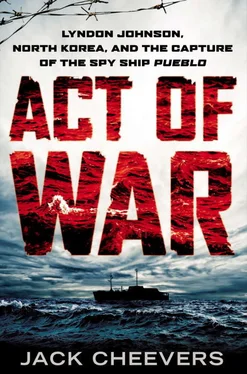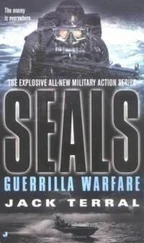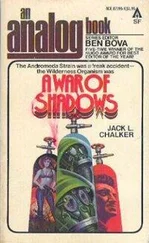In 1964, Bucher was posted to Submarine Flotilla Seven, composed of half a dozen spy subs based in Yokosuka, the hub of Navy underwater surveillance operations in the Far East. As the squadron’s assistant operations officer, he helped plan sub missions in conjunction with the National Security Agency and the Naval Security Group.
Bucher’s boisterousness was on full display in Japan. At one party he downed 13 martinis and dumped a pitcher of water over his boss’s head. “I’d jump on top of a table and start leading everyone in song,” he recalled. “And I knew damn near every song that had ever been written.”
Bucher’s zest for life, superb navigation skills, and strong work ethic won him many friends and admirers. He knew as much if not more about Western Pacific sub operations than anyone in the Navy. In his two and a half years on the SUBFLOTSEVEN staff, his fitness reports were consistently excellent. But not everyone thought he was ready to command a sub.
“Pete Bucher was—I’m trying to choose my words carefully here—a good guy, a life-of-the-party sort of fellow,” said one former superior who, even decades later, didn’t want to be named. “In the wardroom he was always quick with jokes and things like that. But he wasn’t a submarine commander.
“I never had the confidence with him that I had with some of the other officers. I just wasn’t sure about his professional abilities—naval, technical, leave it at that. Just running a submarine. A submarine is the only vessel where one man can cause the loss of the boat. On a carrier, a cruiser, a battleship, whatever, it takes a lot of men screwing up to cause a loss…. It’s probably a defect in my character, but Pete Bucher was a little too free and easy and all that—devil-may-care—for my taste as a submarine captain. I wanted officers that had their head screwed on right.”
By 1966, Bucher was in line to get his own sub. But there were 35 other qualified officers and only 17 available boats. Bucher ranked 20th on the list of candidates, and the Bureau of Naval Personnel informed him that he wouldn’t get his dream job.
The Navy captain in Washington, D.C., who’d made the ruling, Lando Zech, soon began to hear from some of Bucher’s former bosses, including two captains and an admiral. All thought Zech had made a bad call. Zech couldn’t reverse his decision, but he strongly recommended that Bucher be given command of the next available surface ship.
———
That turned out to be the Pueblo . And now, back in Yokosuka, Bucher made ready for his first mission, although most of his men still didn’t know where they were headed.
The captain was determined to get the steering engine fixed once and for all. Navy mechanics examined it and agreed it was outmoded. But they noted its similarity to the Banner ’s, and the other ferret hadn’t had much trouble while under way. Again, Bucher would have to make do.
In some ways, however, the Navy bent over backward to help him. The Pueblo ’s main engines were completely overhauled. To Murphy’s chagrin, Bucher got a Lucite windscreen installed on the flying bridge to protect deck officers from the elements. Murphy thought the barrier was another ridiculous attempt to run the Pueblo like a submarine, by giving it a faux conning tower. But the skipper felt the uppermost deck gave the best visibility, and Schumacher and Tim Harris were grateful for the added comfort while on watch.
The man behind the Navy’s solicitude was the Pueblo ’s new operational commander, Rear Admiral Frank L. Johnson. The genial, white-haired Johnson was an ex–destroyer captain and holder of numerous medals, including several for bravery in World War II. Not long after the Pueblo arrived in Yokosuka, Bucher paid a call on Johnson, whose title was Commander, Naval Forces, Japan, or COMNAVFORJAPAN. The admiral was responsible for ensuring that the Pueblo was ready for sea. He also was tasked with protecting the spy boat during its voyage—even though he had no dedicated air or sea forces with which to do that, as Bucher was to discover. His grand-sounding title aside, Johnson was in charge mostly of Navy shore stations and small craft scattered throughout Japan and Okinawa. The only oceangoing ships under his direct command were the Pueblo and the Banner .
After the Israeli assault on the Liberty , the Navy decreed that all ships, including AGERs, be armed. When Bucher discovered that a three-inch deck gun was to be mounted on the Pueblo , he “almost threw a fit.” Such a heavy piece of ordnance, he believed, could capsize his little vessel the first time it fired. Navy officials relented and decided to arm the Pueblo with three .50-caliber machine guns instead. But Admiral Johnson didn’t approve of even the lighter weapons. Their presence, he felt, destroyed the logic that the spy boats’ best protection was their very lack of armament. And in a real fight, the machine guns weren’t powerful enough to hold off anything larger than an armed junk. An enemy equipped with a single deck cannon could pound the Pueblo to pieces from thousands of yards away with no fear of ever being hit by .50-caliber slugs.
Bucher agreed with Johnson’s analysis. Originally, the Pueblo carried only a handful of small arms: Thompson submachine guns, rifles, .45-caliber pistols, and some fragmentation grenades for use against enemy swimmers. Its lone gunner’s mate had no experience with heavy machine guns.
The Navy eventually delivered only two machine guns, and neither had an armored shield to protect gunners from enemy fire. Bucher mounted one weapon on a railing on the starboard side of the bow and the other near the stern.
While it foisted unwanted weapons on Bucher, the Navy also kept adding to his pile of classified documents, with more paper accumulating each time the ship reported to a new command. CINCPACFLT had contributed to the stash, and so did COMNAVFORJAPAN. Someone forgot the Pueblo was no longer a cargo ship and sent it an AKL’s allotment of intelligence publications. Somebody else screwed up and delivered documents intended for a converted escort carrier.
Now the Pueblo groaned under the weight of a small mountain of secret papers. They overflowed the storage lockers, forcing the communication technicians to stack the excess in passageways. Some of the documents—such as instructions on routing mail—probably didn’t merit a “secret” stamp. But others were highly sensitive, including a report on the Pacific Fleet’s intelligence collection program and a memo outlining the fleet’s electronic warfare policy. Also on board was a copy of the North Korean “electronic order of battle,” indicating the location and frequencies of all known radar and radio stations. If war broke out, that document would guide U.S. jets and warships as they tried to knock out or jam critical enemy defenses.
In addition to all the classified paper, the Pueblo carried several types of top secret code machines. One was the KW-7, a compact device that transmitted encrypted messages between Navy ships and shore stations at a rate of more than 50 words per minute. The KW-7 was the workhorse of U.S. military communications, widely used by Army, Navy, Air Force, and Marine units from Vietnam to Germany. Another machine, the KWR-37, deciphered “fleet broadcast” messages sent to all U.S. warships around the clock. Each mechanism came with a special set of codes to operate it.
Bucher requested permission to offload part of this extraordinary cache, to make sure it never fell into enemy hands. Admiral Johnson consented, but the Pueblo still was left with a large quantity of classified documents and at least a dozen code machines—and no fast, reliable means of getting rid of them in an emergency.
Читать дальше












